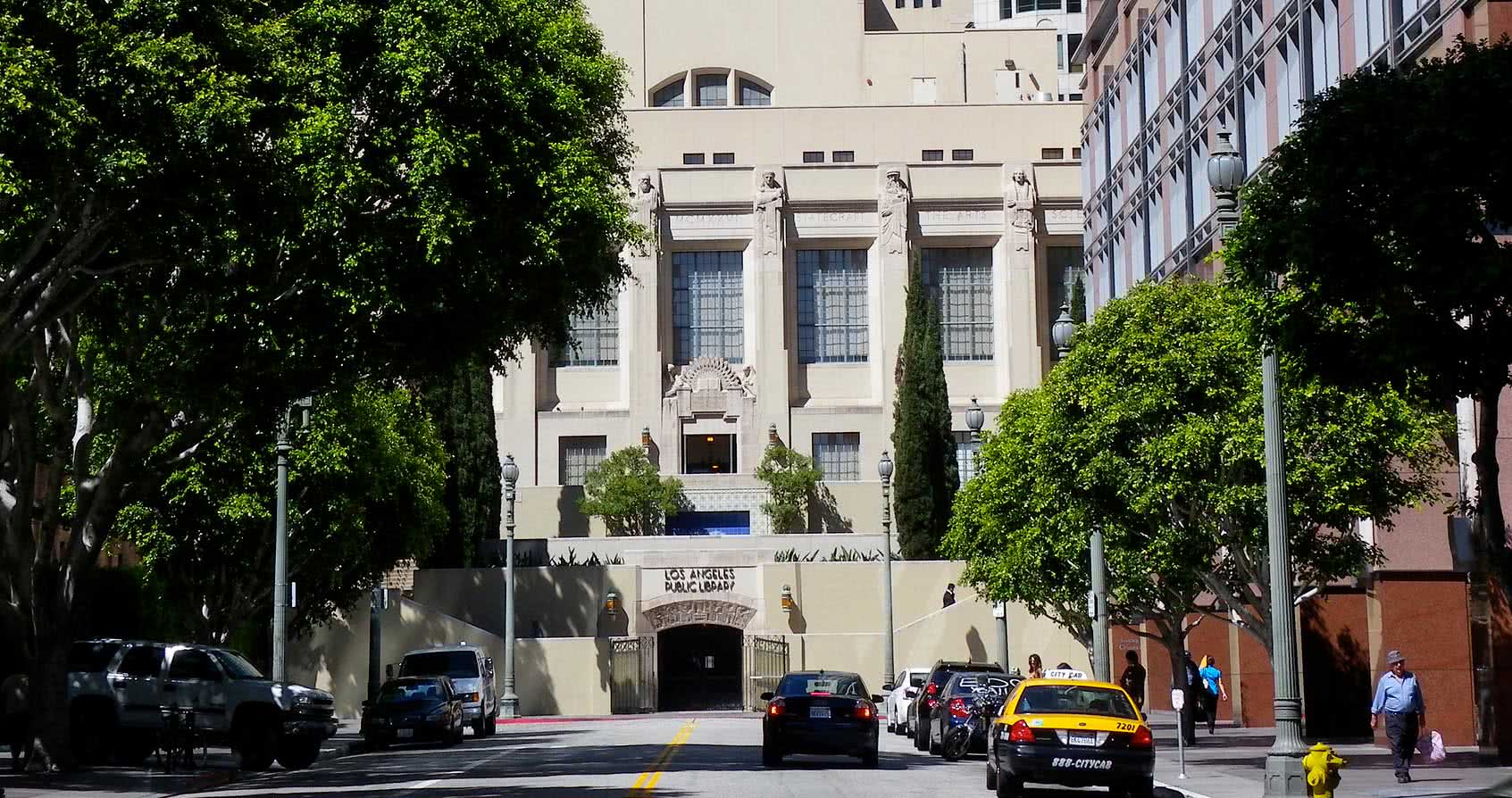American companies spend about $166 billion each year on leadership development. Government and military agencies spend more on training per employee than nonprofits and private companies. Yet nearly 70 percent of human resources professionals aren’t confident that their organization currently has the right people to guide the company into the future. Though there’s a clear recognition that leadership development is critical, somehow our future leaders are in such short supply.
At the Los Angeles Public Library, where I’ve served as a FUSE executive fellow for more than a year, we’ve been able to turn the tide on this trend with a networked, all-staff approach to leadership development. And the entire staff is on board. Before launching Take the Lead, the program we began last year for less than 1 percent of the library’s annual budget, 86 percent of staff agreed there was no shared definition of leadership at LAPL, according to a survey. One year later, 84 percent have experienced a profound change of opinion and believe there is now a shared definition. And 90 percent of staff now believe that LAPL fosters opportunities to grow as a leader, compared to only 55 percent last year. These are encouraging numbers.
In 2018, the Los Angeles Public Library (LAPL) was facing the same leadership development challenge that makes 80 percent of organizations believe they need to increase their leadership development budgets. The library had sent select employees through traditional leadership academy programs, both internally and externally. These efforts had some success for the individuals, but limited organizational impact and sustainability. While the library had a tremendous pool of talented employees who often stayed with the organization for decades, the internal pipeline for senior-level positions was not as strong as it could have been. The nation’s second largest library system needed a robust pipeline of leaders to remain relevant and responsive in a rapidly changing urban environment. And most importantly, the urgency to build the pipeline was great: 40 percent of Los Angeles City employees became eligible for retirement in 2018.
My work with the Los Angeles Public Library began in October 2018, when I partnered with City Librarian John F. Szabo and Assistant City Librarian Susan Broman to determine how this beloved institution could create an internal leadership development program. It was important to John and Susan that LAPL’s program be sustainable through changing budgets, accessible to our broad talent base, and lead to observable outcomes. Unlike private sector companies, most government agencies “rely on annual appropriated budgets funded by taxes,” and cannot “enhance their financial position by capturing a larger market share.” To sustain funding for leadership development through budgetary crises or transitions in political leadership, data that supports a program’s effectiveness is critical for government agencies. We couldn’t afford not to achieve the desired outcomes.
So, rather than start with my idea, or any expert’s idea, of what a leadership development program should look like, I started by getting to know LAPL specifically, and interviewed 80 employees, or about 7 percent of the library staff. From that, I learned:
- A mindset shift was needed. Many of our staff members, even the ones who are looked to often, hesitated to call themselves “a leader.” We were likely missing out on potential future leaders because of mindset. My work would not be as simple as announcing, “We have a leadership development program, sign up!”
- There was no collective or shared definition of what good leadership looked like for our organization. Without that North Star, our staff didn’t know what leaders would be expected to work toward, or whether they already had any of those skills or qualities within themselves.
- Our staff felt that the best way to learn how to lead was by doing, in their own context. Rather than in classroom workshops, our staff learned the leadership skills they had by watching examples, taking on stretch assignments, or participating in system-wide committees. This aligns with data in the training field that shows that individuals forget an average of 90 percent of the information presented in workshops within a week. Even when individuals intended to bring newly learned practices into their workplace, they often failed because the rest of their work unit did not go through that same learning experience.
To reach and engage our staff, our program would have to establish a common language for leadership, organization-wide, so that we would all know what we were working toward. It would have to position leadership as a practice, not a destination. Regardless of role or title, leadership would be something that you could step into, or step back from. Rather than be something “extra,” it would have to leverage existing systems, processes, and communications to be accessible to everyone, and embedded within everyday work.
The result is a program called Take the Lead, which helps all LAPL employees practice and develop leadership skills.
The first step in establishing this program was to create a shared definition of leadership. Using a toolkit called the Ways of Being that Work, created by FUSE alum Andrea Lipton, a combination of staff members and executive leaders selected six “ways of being” that would be most central to leadership at the Los Angeles Public Library. While all 52 ways in the toolkit are valid and make for good leaders, by focusing on the six that were most critical for us, we created a shared vision and perhaps more importantly a manageable, memorable set of leadership values that would apply to all of our employees. There are ways to be adaptable and inclusive, whether you are a clerk, an analyst, a director, or a librarian, whether you work in a branch, a coordinating office, or in public relations.
Many organizations will define leadership or identify competencies, and then use these competencies to form a series of facilitator-led workshops that designated emerging leaders or existing leaders will go through.
But we wanted to unlock the leadership potential in everyone. As Broman said when we officially launched the program, “Empowering staff in every part of our system to practice leadership skills will help us take swifter action, make better decisions, collaborate more effectively, innovate in tune with our communities, and ultimately strengthen the services we deliver every day.”
So we created a network of peer facilitators across our system, called Leadership Ambassadors. These are employees from every department and every classification who embody the leadership values, and who are trained to facilitate leadership activities in existing staff meetings and gatherings. A staff planning team created a centralized curriculum with activities and discussion guides about leadership, helping staff recognize how they practice our “ways of being” in their everyday work, and how they can continue to develop their skills. This way, all of our staff members have access to the same experiences, with Ambassadors who are close to their area. In the first six months of Take the Lead, 45 discussions and activities were held across the system, reaching 450-plus unique staff members.
To legitimize and champion our leadership development efforts, we engaged all supervisors in a real-time, personalized leadership coaching application called LEADx. Rather than send five to 10 managers away to weeklong special programs, more than 120 of our executives, middle managers, and front-line managers spend 15 to 30 minutes a week with actionable content and tips to continually work on their leadership, year-round. Because LEADx is tailored to our managers’ individual personalities and goals, engagement and application is high, and because it is powered by AI through a digital application, we are able to sustainably offer ongoing leadership development to a broad swath of our formal leaders. This sets the organizational expectation that how we lead matters.
Taking this tailored, embedded, and networked approach does have its challenges. It takes longer to mobilize and on-board staff members to take ownership of a program like this, compared to hiring facilitators and running a centralized program using traditional workshops. Like any change initiative, some staff were early adopters of Take the Lead, whereas others needed more evidence, over a longer period of time, in order to get onboard. LAPL continues to work toward system-wide adoption and practice of the leadership values, but, to date, the changes have proven to be more lasting and deeply embedded in the organization than a leadership academy might have been.
Testing the Program
COVID-19 was perhaps the first major test of Take the Lead, when a 148-year-old civic institution had to close the doors of all of its 73 locations for the first time, staff had to move to a telecommuting environment with varying access to technology, and the entire organization wondered: How do we continue to serve the city, which potentially needs us more than ever, safely?
Instead of waiting for direction from the top, however, what happened next was remarkable.
- From the moment the library closed, staff started developing and delivering services to their communities at a distance. They created initiatives beyond what executive leaders might have imagined, such as Instagram storytimes, online digital content tutorials, poetry readings, cooking demonstrations from home kitchens, and Ask a Librarian sessions live in English and Spanish.
- Library staff also adapted how they communicate and work together. Within five days, the Library’s Digital Content Team researched and rolled out Basecamp as a virtual workspace to stay connected. Various branch managers moved their teams to a project-based working model, experimenting with innovative staffing approaches that may even last beyond the pandemic.
- Library staff have also gone above and beyond their role as city employees and, therefore, Disaster Service Workers (DSW). As of mid-May, LAPL deployed 251 library staff members to nine different DSW assignments, filling a total of 1,592 DSW shifts. Of all DSW requests throughout the city, the Los Angeles Public Library had filled 13.9 percent of those assignments. The next most successful department had filled 7.9 percent.
Library staff at all levels credit Take the Lead, at least indirectly, with preparing the institution to meet the challenges of a global pandemic.
“I have been amazed and delighted by how relevant our leadership values have been during every week and phase of these times,” said Szabo. “They keep us connected as one team and one organization. And they give our staff a common, shorthand way of knowing that they are empowered to experiment and try new things. Their efforts to lead in various ways — to manage their teams in new ways, to launch distance programming, to contribute to our reopening plans — are welcomed.”
Acting Venice Branch Manager Ramin Naderi said, “Ever since we closed the library, we have been using our leadership values to think about our professional development efforts, to recognize one another, to envision our reopening, and to align our distance programming with the mission of our organization. Take the Lead prepared us to turn this threat into an opportunity.”
Every organization needs future leaders like this, and it doesn’t have to cost thousands of dollars per person to develop them. With a guiding framework, a mindset of leadership as a practice, and an activated network of peer influencers and executive champions, the Los Angeles Public Library is shaping and strengthening its future leaders through what they are being called upon to do today.
Photo Credit: Ellen Forsyth on Flickr

